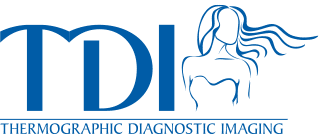Thermography or infrared imaging is a physiologic study that can measure changes in tissue by providing reproducible and accurate images of skin temperature. These images can be analyzed both qualitatively for thermovascular mapping and quantitatively for minute changes in skin heat emission. Anatomic findings may not correlate exactly and may not even be evident as Thermography, being a physiologic study may display abnormalities years before anatomic changes are seen.
Infrared Imaging is the only non-invasive technology available to image and map vasomotor instability. It can play an important role in clinical diagnosis and may be helpful distinguishing between central and peripheral changes affecting the sympathetic nervous system.
Other technologies like MRI, Ultrasonography, CAT Scans, and Electrodiagnostics or EMG do not provide the same information offered by Infrared Imaging. The clinical application of Infrared Imaging may be important in understanding the pathophysiology associated with these changes and improve patient outcomes.
Infrared neuromusculoskeletal imaging provides an overview of the location, extent, and severity of sympathetic skin response abnormalities. When abnormalities due to vasomotor/sudomotor dysfunction occur there are associated changes in skin temperature. Infrared Imaging can be performed from the cervical through the lumbosacral spine and includes the upper and lower extremities, inclusive of the fingers and toes.
The room is maintained at 68-70 degrees, the ideal temperature for thermographic testing. The patient disrobes to their undergarments. We provide disposable undergarments for men and women. If you prefer to wear your own we ask women to wear a thong and our disposable bra and men are asked to wear an athletic supporter or bikini briefs. This level of exposure is necessary in order for us to image the buttocks which are an integral part of the study. The patient then equilibrates to the room temperature for ten to fifteen minutes. The patient is standing about three feet from the camera. There is no physical contact, no compression, or radiation. Usual time spent in the office varies between thirty and sixty minutes depending upon the complexity of the study.

